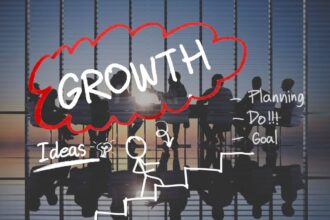Search visibility has evolved far beyond inserting keywords into text. Today, digital platforms are powered by smarter algorithms, creative content models, and user-centric signals that reshape what ranks and resonates. Content creators, marketers, and developers are stepping into a new era that challenges them to think holistically. It’s no longer just about “search engines” in the traditional sense, but about diverse ecosystems where discoverability spans beyond Google. Content must now adapt to new engines that understand nuance, intent, and context in sophisticated ways. This shift gives rise to modern frameworks that blend creativity, artificial intelligence, and performance strategy. For those exploring this changing landscape, it is a timely and necessary topic to explore. What is Generative engine optimization? Keep reading to uncover how this concept is impacting the way digital content gains traction and how you can align with this new wave of optimization.
Algorithms Are Adapting to Human-Like Signals
The latest generation of search algorithms is increasingly human-centric. They no longer merely analyze backlinks and keyword density but evaluate how users interact with content in real time. Factors such as bounce rate, scroll depth, interaction time, and return visits all influence how content is ranked. What does this mean for creators? It means content must go beyond technical compliance and offer actual value to human readers.
Engines are becoming adept at detecting content written with intention and flow. That includes emotional resonance, storytelling structure, and informative tone. Text that engages people and encourages them to explore further signals relevance and utility. It’s not uncommon for engines to adjust rankings based on behavioral data within hours of a post going live.
This adaptation is creating opportunities for brands that care deeply about user experience. Websites optimized for clarity, accessibility, and relevance tend to perform better than those built solely for crawlers. The line between human appeal and machine readability continues to blur, and those who find balance are the ones rising in visibility.
Even simple changes like breaking content into readable chunks, using informative subheaders, and embedding value-added elements (like FAQs or interactive visuals) are seen favorably. Content that imitates natural human communication—not robotic patterns—achieves better performance metrics across search engines and recommendation platforms.
The Intersection of Creativity and Performance
Optimization today is no longer about “gaming the system.” It’s about aligning creativity with performance goals. Teams are now blending artistic elements like layout design, voice, and brand tone with core metrics such as click-through rate, average session duration, and conversion paths. The integration of data and design has created a more balanced approach to content development.
Color psychology, storytelling frameworks, and even background video loops are being used not only to catch attention but also to hold it. Creative elements are tested alongside analytics to measure effectiveness. Interactive content like quizzes, scroll-triggered animations, and dynamic FAQs also serve both engagement and UX purposes.
When creativity is tied to measurable results, teams become more agile in their efforts. They can quickly identify what’s working and iterate with confidence. The most successful digital strategies today aren’t built on static blueprints—they’re fluid, dynamic, and always improving based on feedback.
Brands embracing experimentation are outperforming those sticking to rigid SEO formulas. A campaign that combines thoughtful language with high-performing design elements delivers on both aesthetics and results. It turns browsers into readers—and readers into loyal visitors.
Even performance reporting has shifted. It’s no longer enough to show page views. Teams now track content shares, comment activity, and engagement time to determine true performance. This holistic measurement encourages more purposeful creativity.
Personalization as the New Standard
In the modern digital environment, content personalization has become a baseline expectation. Visitors engage more with material that speaks directly to their needs, preferences, and circumstances. Personalization strategies—such as dynamic content modules or intent-driven page layouts—are becoming core components of optimization frameworks.
Content platforms are increasingly using behavioral data to segment users and present relevant paths. For instance, a returning visitor might see different copy than someone landing on the page for the first time. These subtle shifts in messaging, visuals, or calls-to-action can significantly improve conversion metrics.
Even at the structural level, content is becoming modular. Brands build flexible content blocks that can be rearranged or customized based on who is viewing the page. These blocks may include case studies, testimonials, forms, or product details that change in real time depending on user data.
The key is empathy—understanding what different users need at different moments. A reader looking for education requires something different from one ready to make a purchase. Smart personalization respects these differences without being intrusive.
As engines continue to reward user-centric content, personalization will only grow in importance. The challenge will be balancing scalability with authenticity. It’s not about creating hundreds of unique pages—it’s about crafting one adaptable ecosystem that feels relevant to everyone it reaches.
Redefining “Optimization” Beyond Keywords
When people hear “optimization,” they often still think of keyword stuffing or meta tag fine-tuning. That mindset is outdated. True optimization now includes performance at every touchpoint—from how fast a site loads to how it makes a visitor feel. This broader view requires cross-functional thinking.
Designers, developers, writers, and analysts now collaborate to ensure content works on all levels. That includes clarity in messaging, mobile responsiveness, image compression, and accessible navigation. Every piece must contribute to a seamless experience.
Even tone of voice is optimized. Whether formal or casual, tone can guide a reader’s trust and comprehension. Matching tone to audience expectation is a form of alignment that fosters loyalty and repeat engagement.
There’s also more emphasis on storytelling structure. Clear beginnings, engaging middles, and satisfying conclusions help readers feel they’ve completed something meaningful. This structure also encourages social sharing and bookmarking, indirect signals that engines pick up.
Optimization has moved away from static templates and toward living ecosystems. These ecosystems are designed to evolve with audience needs, algorithm shifts, and brand goals. Optimization, then, becomes a continuous conversation between user and creator, not a checklist to complete.
The Future Is Co-Created with AI
AI isn’t just changing content—it’s reshaping how we think about creativity itself. Tools powered by artificial intelligence are helping teams draft content, generate images, build layouts, and even predict what users will want next. But instead of replacing creativity, AI is amplifying it.
Writers can use AI to brainstorm titles, refine grammar, or draft first versions. Designers are tapping into generative tools for layout suggestions or adaptive image sets. Data analysts can model different audience paths using AI-driven forecasts. All these functions free up time for strategy and experimentation.
The most powerful application of AI in optimization lies in speed and scale. You can test five versions of a page and choose the best one based on real-time engagement. You can simulate how content performs in different formats before launching it. AI enables iteration at a pace humans alone can’t match.
That said, human oversight remains essential. AI may generate ideas, but it’s the human touch that ensures relevance, nuance, and emotional depth. Co-creation—where humans guide machines—offers the best of both worlds.
As more platforms evolve to include generative search results, conversational interfaces, and discovery feeds powered by machine learning, knowing how to shape content for both AI and people will become a critical skill.
The boundaries of digital visibility are being redrawn. Optimization is no longer confined to one engine or a single method. It’s an evolving mindset—one that embraces creativity, empathy, and adaptability as cornerstones of success. For creators and brands navigating this space, staying curious is the real strategy.
Now is the time to rethink what visibility means in a landscape shaped by machines and humans alike. The content you create today could be the cornerstone of the audience you build tomorrow. Keep exploring, experimenting, and refining. You’re no longer just publishing; you’re co-creating the future of digital presence.


















